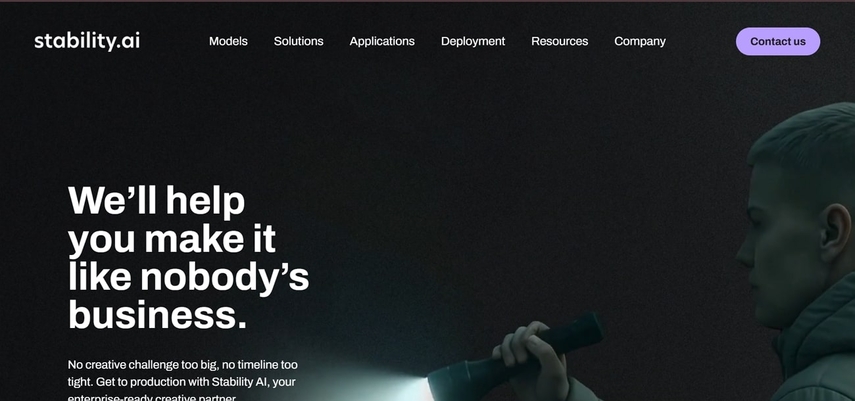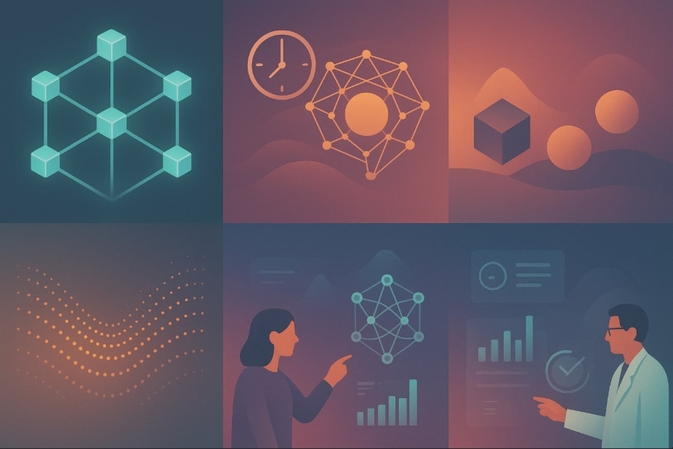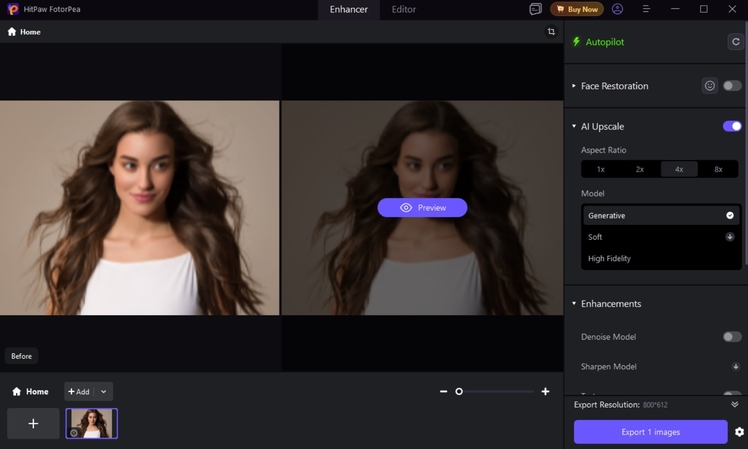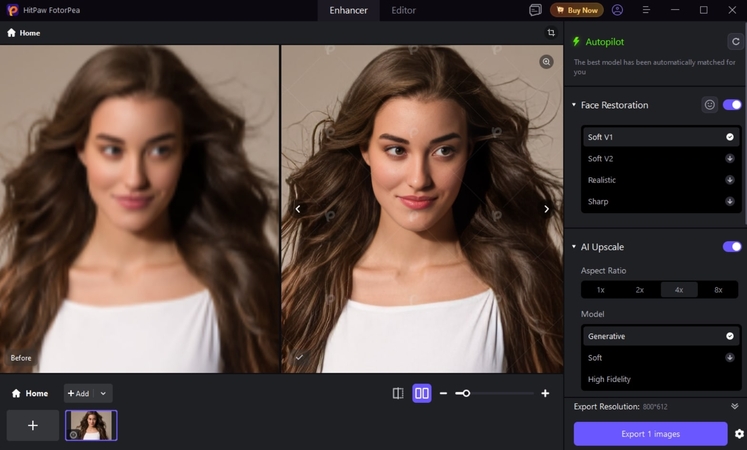Stability AI Explained: Tools, Models, and Creative Diffusion Power
Stability AI has become a cornerstone of the modern generative AI movement, where technology meets creativity to redefine digital expression. Founded in 2019, the company is best known as the creator of Stable Diffusion. It has evolved into a multimodal innovation hub, developing cutting‑edge models across image, video, 3D, audio, and text domains. In this guide, we will provide you with all the necessary information about Stability AI.
Part 1. What Is Stability AI? The Powerhouse Behind Diffusion Models
Stability AI LTD is a pioneering AI company whose mission is to make creative AI tools accessible to everyone. Founded in 2019 in London, the company has been empowering artists, developers, and enterprises alike to explore the innovative capabilities of machine learning. This company plays a vital role in global open‑source AI research and development, supporting transparency, ethics, and collaboration.

Its ecosystem has been used by almost 300,000 creators and researchers worldwide, making it an innovation hub and a community platform. This tool is specifically designed for flexibility and scalability, which allows users to generate high‑quality visuals from natural language prompts.
Part 2. Stability AI Platform Overview: Models, Tools, and Access
After learning why Stability AI model stand out in the AI landscape, let's break down its key components and how you can access them:
Key Features
- 1.Stability AI has recently expanded its models for enhanced lighting, typography, and rendering control.
- 2.It can create realistic 3D scenes from static visuals used in gaming and CGI workflows.
- 3.This platform generates music tracks from textual prompts and supports audio‑to‑audio transfer.
- 4.Its industry‑leading models are famous for diverse style generation and prompt accuracy.
- 5.Creators and developers widely use this platform to generate GUIs with its AI features.
Who is Using Stability?
After understanding what Stability AI offers, it's worth exploring who's actually putting its technology to use:

- 1. Gaming & Media:Many gaming studios use Stability AI for rapid prototyping, environment design, and cinematic rendering.
- 2. Marketing & Advertising:Marketing and Advertising agencies use SDXL for high‑volume content automation and concept visualizations.
- 3. Education & Research:Stability AI is used by universities and labs worldwide for open diffusion research and AI model fine‑tuning.
- 4. Enterprise Clients:Multinational companies like Amazon and Postman use Stability tools for creative automation, visualization, and design assistance.
What Makes Stability Unique?
Stable Diffusion AI models are better than those on other platforms because they offer open‑source commitment and developer flexibility. Unlike other closed models like Midjourney, it enables users to download, fine‑tune, and self‑host its models for maximum customization. Furthermore, it provides broad compatibility with Amazon Bedrock to ensure enterprise‑grade scalability and secure cloud access, making it an ideal solution.
Pricing
Upon hearing the features of Stability AI, let's have a quick breakdown of its pricing plan for your better understanding:
| Category | Plan/Model | Pricing |
|---|---|---|
| Stable Assistant (Chat + Image) Tool | Standard | $9/month, $90/year |
| Pro | $19/month, $190/year | |
| Plus | $49/month, $490/year | |
| Premium | $99/month, $990/year | |
| API Credits (Platform) | Credit Packs | $10 = 1,000 credits |
Part 3. Stable Diffusion AI Model vs Stability AI Model: What's the Difference?
While most people misinterpret names, Stable Diffusion and AI Stability represent two distinct platforms. Stable Diffusion refers to the specific diffusion-based image-generation architecture. Whereas Stability AI includes a comprehensive suite of multimodal tools, providing a broader and more creative framework.
| Versions | Native Resolution | Parameters | Strengths | Use Cases |
|---|---|---|---|---|
| Stable Diffusion v1.5 | 512×512 px | 890M | Huge community support, extensive Lora support | Style-specific art, character consistency |
| Stable Diffusion v2.1 | Up to 768×768 px | 1.1B | Better depth-to-image, improved prompt realism | More detailed photo‑realistic results |
| SDXL 1.0 | 1024×1024 px | 2.6B (base + refiner) | Improved color balance, dynamic lighting | Professional designs, marketing visuals |
| SDXL Turbo | 1024×1024 px | - | Fast generation, optimized for real‑time tasks | Creative workflows and interactive apps. |
| SD 3 (Medium) | 1 MP | 5B | Multimodal Diffusion Transformer | Complex prompts, high‑detail outputs |
| SD 3.5 Large | 1 MP+ | 8.1B | State‑of‑the‑art variant, customizable fine‑tuning | Advertising, cinematic composition |
| SD 3.5 Large Turbo | 1 MP | - | Fast distilled model | Content iteration, live creative demos |
Part 4. AI Stability and Reliable Model Performance
AI stability refers to a model's ability to deliver consistent, high‑quality outputs under changing prompts. In generative systems like Stable Diffusion models, it produces similar visuals with color accuracy and subject consistency, even during fine‑tuning. Recently, Stability AI has released new models that have boosted overall rendering speed. So, let's explore how stability works to achieve balanced results:

- 1. Consistent Frameworks:It integrates consistency training to reduce output variability across generations and maintain overall shapes.
- 2. Time Consistency Models:The platform researches time consistency models to enhance the overall speed with up to 50× speed improvements.
- 3. Multi‑View Consistency:In versions such as SV4D 2.0 and SViM3D, AI Stability uses multi-view coherence to stabilize textures and lighting across frames.
- 4. Balanced Noise Scheduling:Modern models use refined latent noise distributions to improve convergence and ensure fine details remain consistent.
- 5. Empirical Evaluation:This platform uses the Fréchet Inception Distance (FID) to assess predictive performance and visual stability.
Pro Tip. HitPaw FotorPea: The Best Tool to Enhance Stability AI Creations
Suppose you generated a visually appealing image of a breathtaking castle using Stability AI. However, when you examine the output, you notice that it is badly pixelated and low-resolution. In this situation, we recommend using HitPaw FotorPea's (formerly HitPaw Photo Enhancer) dedicated Image Enhancer tool, which lets you upscale the image up to 8x. Furthermore, you can even preview the upscaled image even before rendering it to the device.
Key Features
- 1.Provides a denoising model to remove any kind of artifacts or noise from Stability AI images.
- 2.Allows for sharpening and fixing blurred faces without ruining actual features of the stable diffusion content.
- 3.Offers a batch processing system to enhance all AI-generated pixelated images simultaneously.
- 4.Let you use the BG remover to nullify any unwanted background from the picture.
- 5.Provide an AI image editor that lets users add desired elements to the Stability AI creation.
HitPaw FotorPea Guide: Perfect Companion for Stability AI Art
Now, if you want to use this efficient tool to enhance your stable diffusion AI art with complete accuracy, then read the following step-by-step guide:
Step 1. Click on the Enhance Photos Now Button
As you enter its main interface, click on the "Enhance Photos Now" button to insert the desired pixelated image.

Step 2. Choose Desired AI Models and Hit the Preview Button
Here, enable the "AI Upscale" model along with other desired AI models. Afterwards, hit the "Preview" button to get the enhancement procedure started instantly.

Step 3. Download the Upscaled Outcome to the Device
Finally, the image is upscaled, and you can preview the outcome. Upon previewing, hit the "Export Images" button to get it exported to the device.

FAQs on Stability AI Model
There are numerous stable diffusion online models available, including "Stable Assistant and DreamStudio" and "Amazon Bedrock Integration." It also provides a Developer Platform (API) that provides image generation and inpainting into apps and websites.
Its recently launched new models, including Stable Diffusion AI model 3.5 and SDXL, mainly focus on consistent color accuracy, prompt fidelity, and lighting coherence. The platform also works on authenticity systems such as watermarking and dataset auditing.
Stability AI ensures full security and ethical use of this tool by providing a "Safety-by-design framework." All the data generated by this tool is screened for bias, harmful imagery, and personal information before model training.
Stability AI supports all standard formats for image generation, such as "JPEG, PNG, WEBP". Whereas, for animation, it supports "GIF, MP4," and "Binary Data Streams" for API File Export.
Conclusion
Concluding this, in this article, we have summarized all the necessary information about Stability AI, including its new models. However, if you want an advanced yet free alternative, we recommend using HitPaw FotorPea, which provides you with a dedicated AI generator.
Leave a Comment
Create your review for HitPaw articles









